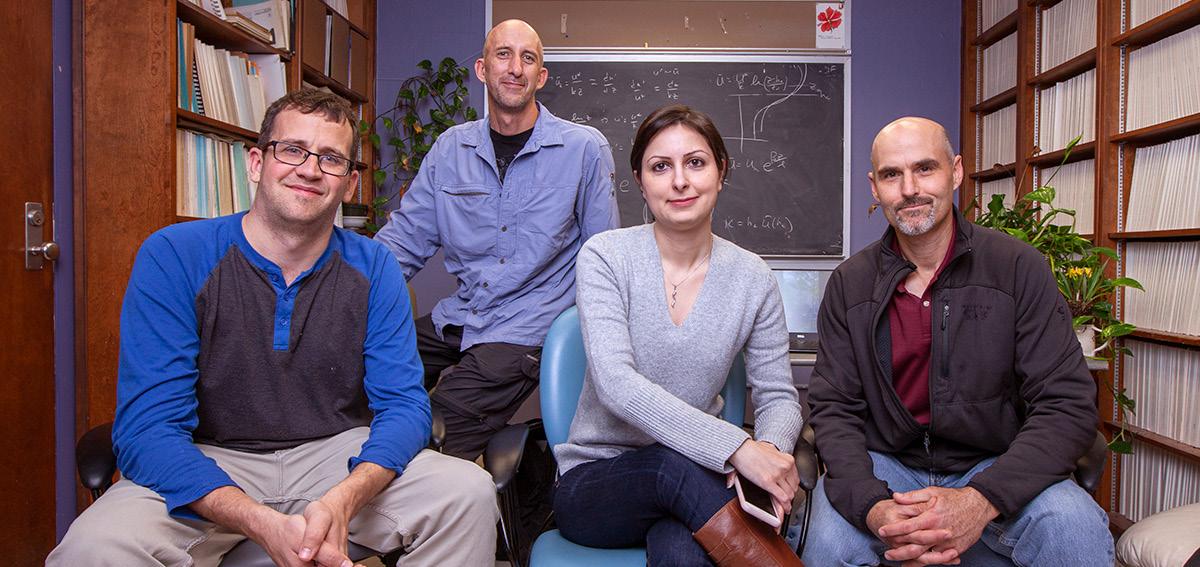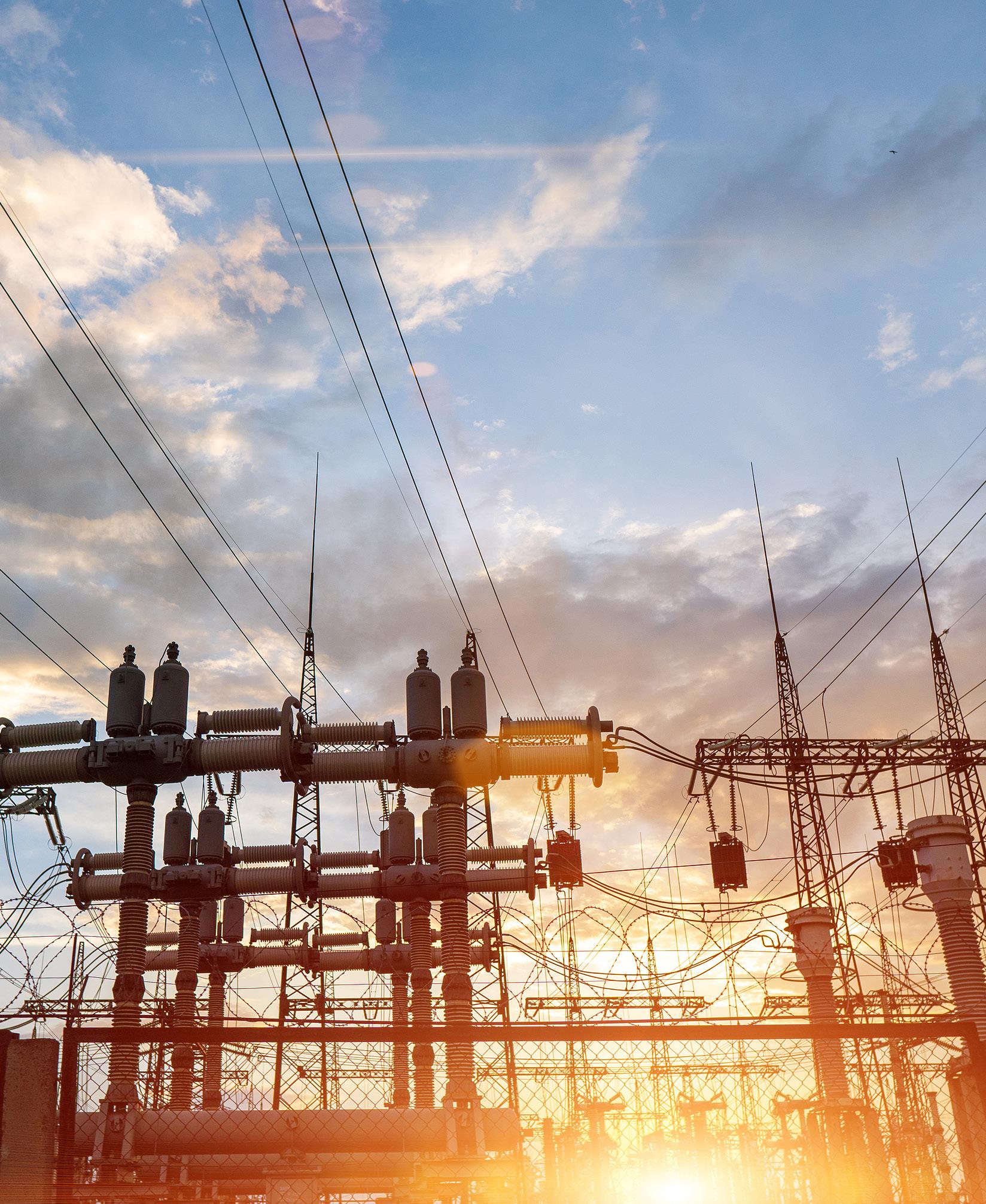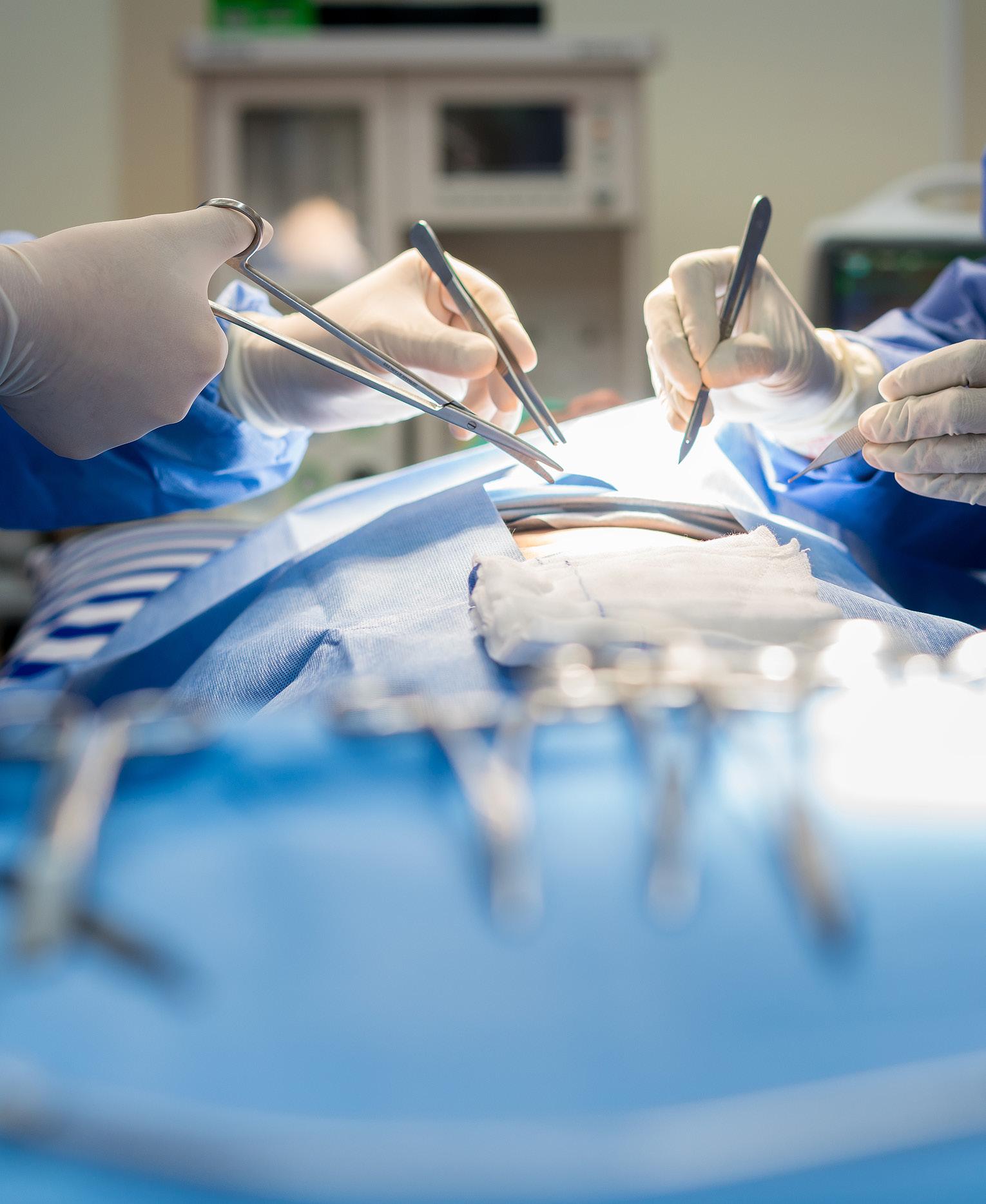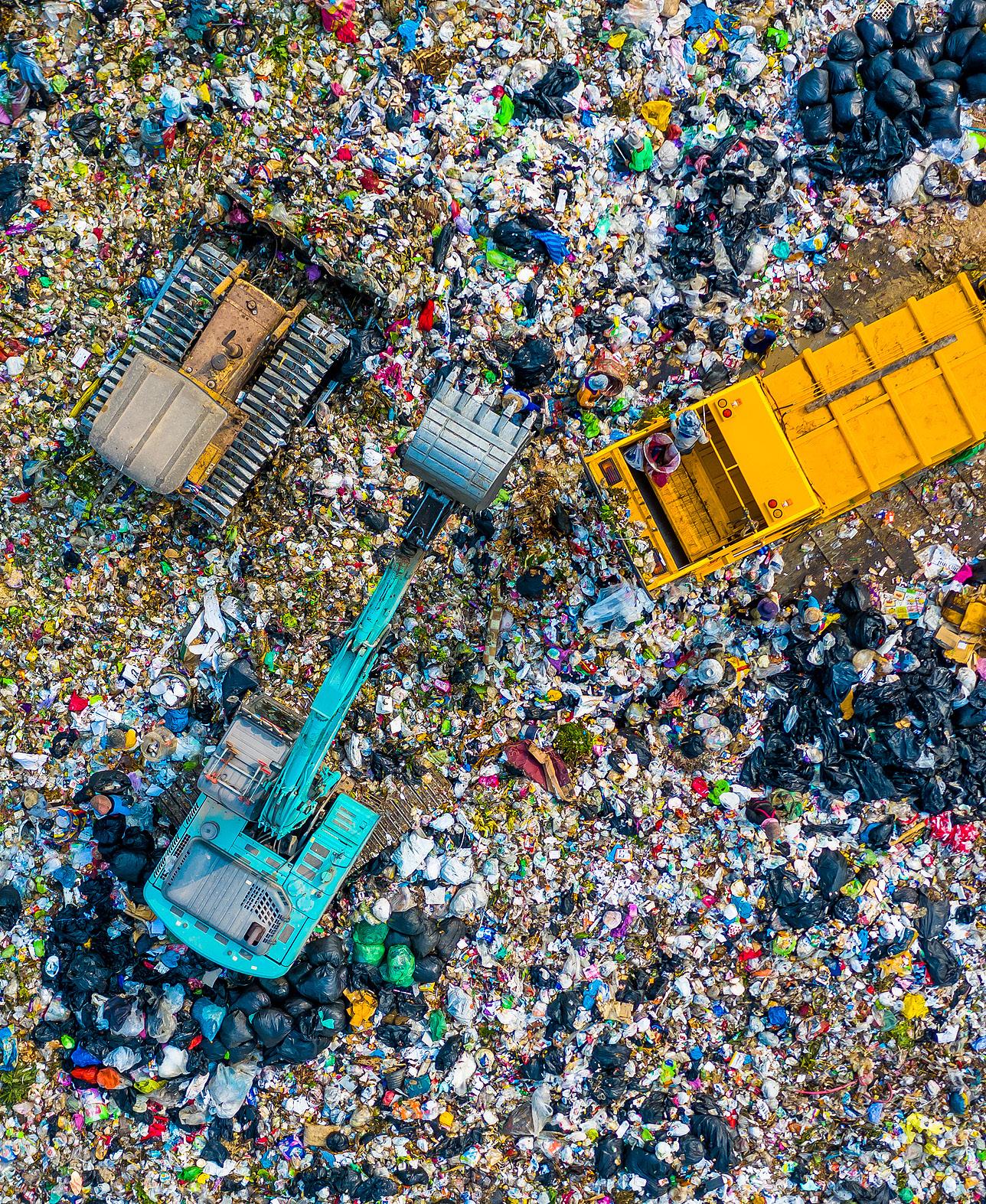HIGH-IMPACT ENGINEERING RESEARCH COVID FACTORY-IN-A-BOX Two researchers hope a new concept called “factory-in-abox” may provide a solution for disruption in the supply chain that occurs in a disaster. The idea is to bring a fully functional mobile factory to the people directly affected by a disaster. Once the need is met, the factory can be packed up and moved to another location. The logistics involve many moving parts, from setting up the facility, to delivering raw materials, to finding suppliers. // Timing is everything according to Hui Wang, an assistant professor of industrial engineering. Wang is the principal investigator for a $300,000 National Science Foundation (NSF)-funded research project developing analytical tools for decision-making in supply chain network design and assembly planning for factory-in-a-box manufacturing. The NSF Excellence in Research (EiR) grant provides funding for operations engineering research and includes an educational component for undergraduate research. // Wang’s three-person team includes Maxim Dulebenets, an assistant professor of civil and environmental engineering, and Weihong Guo, an assistant professor of industrial and systems engineering at the Rutgers School of Engineering. // Research from this project could help build a framework for supply chain network design and provide valuable insight into the logistics of materials planning and delivery. BIOMEDICAL
BIOMEDICAL SPECIALIZED MRI FOR TUMOR SURVEILLANCE Sam Grant, a biomedical engineering associate professor, uses a technique called chemical exchange saturation transfer (CEST) to study the progression of glioma. // CEST allows scientists to detect structures or processes in the body that traditional MRI can’t visualize. MRI scanners are typically used to detect the hydrogen in the body’s water; that information generates an image of structures in the body. In CEST, hydrogen atoms from specific molecules interchange with hydrogen atoms in free water within the body, highlighting the interactions of those target molecules in MRI scans. // Grant and his colleagues have been optimizing the technique for experiments in the MagLab’s 21.1 tesla MRI magnet. Using CEST, they can identify metabolites, neurotransmitters and other molecules involved in tumor progression. // “Looking at the chemical exchange allows us to identify unique patterns in the spectra that correspond to a tumor that is changing dynamically as it’s growing,” said Grant. RESILIENCY
IMPROVING PRESCRIBED BURNS
NEW TOOL FOR STEM CELL GROWTH
Biomedical engineering researchers are developing a high-tech material currently used in athletic equipment and prosthetics into a special tool to better develop stem cells. The work could improve drug screening, disease modeling, precision medicine and cell therapy. // Yan Li, an associate professor in chemical and biomedical engineering, and Changchun Zeng, an associate professor in industrial and manufacturing engineering, received a $400,000 grant from the National Science Foundation for this research to explore ways to better control the fate of stem cells. // Their project will examine induced pluripotent stem cells, which are stem cells developed from mature cells and changed into a state that allows them to develop into any tissue in the body. Using a unique, hightech material developed by Zeng called auxetic foam, they will build three-dimensional scaffolds on which the cells can grow. // Li and Zeng are interested in how the scaffolds’ mechanical properties influence the fate of the stem cells they surround. Their goal is to understand how three-dimensional scaffolds that surround growing stem cells influence the extracellular structures and the proteins those cells secrete, and therefore, the types of cells they become. 6 | 2020 ANNUAL RESEARCH REPORT
A $2.2 million Department of Defense grant funds an investigation into the dynamics of smoke from prescribed burns, giving land managers a better understanding of when and how to best use the technique. // Understanding how smoke plumes develop and travel is an interdisciplinary problem. FSU researchers from the Department of Scientific Computing, the FAMU-FSU College of Engineering’s Department of Mechanical Engineering and the Geophysical Fluid Dynamics Institute are partnering with the forest research station Tall Timbers, Los Alamos National Laboratory and others to understand the complexities of wildland fires. // Partnering with investigators who have fire management experience helps researchers take what they discover at an academic level and transition it to a practical application. Existing knowledge about how fires burn informs their model. They refine that with new parameters, such as the topography and distribution of vegetation that acts as fuel in a burn plot, the way wind moves through the plot, the fuel moisture and the heat radiated from the fire—then collect data from an actual fire to make a more accurate model of how smoke plumes rise from a prescribed burn. // “We want our models to capture the true physics and our simulations to be as close to what really happens in the field as possible,” said Neda Yaghoobian, an assistant professor of mechanical engineering. “This requires parameters that can take input from fire managers and other researchers to refine our model.”







